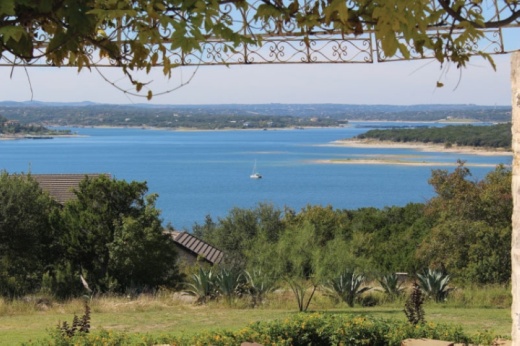Algae samples collected June 22 from Lake Travis did not detect toxic cyanobacteria, also referred to as blue-green algae, according to a July 2 news release from the Lower Colorado River Authority.
The LCRA collected the samples from the Travis Landing region of the lake, where algae samples have tested positive for cyanotoxins, the toxins produced by cyanobacteria, since February.
In late June, samples from the area reflected a significant decline in toxicity for the first time since testing began this spring. Despite the continued decline in toxins, the results do not signal an “all clear” sign, according to the LCRA.
“There is blue-green algae throughout the Highland Lakes, and we expect algae to continue to grow as the weather gets hotter,” said John Hofmann, LCRA executive vice president for water, in the release.
In Texas, the hot summer months present a higher risk for toxic algae blooms, which can thrive in warm, stagnant water. As a result, Hofmann said it is likely future testing may detect toxins, and the LCRA continues to recommend all contact with algae be avoided.
“Don’t take a chance,” Hofmann said, urging community members to protect their family members and pets.
Notably, algae looks the same whether it is producing toxins or not, and conditions can change frequently, meaning a nontoxic algae bloom can become toxic.
The July 2 news release will serve as the LCRA’s final update regarding its algae monitoring at Travis Landing, which began in February after a dog died after swimming in the area. Moving forward, the LCRA will begin a new monitoring program in Lake Buchanan, Inks Lake, Lake Lyndon B. Johnson and Lake Travis.
The city of Austin has been grappling with its own blue-green algae issues, which date back to at least summer 2019. In light of recent occurrences on Lake Travis, Austin’s Watershed Protection Department has ramped up its monitoring program.
As of July 2, low levels of dihydroanatoxin—a type of cyanotoxin also dedicated in Lake Travis—has been found at Redbud Isle. Samples collected from Lady Bird Lake and Lake Austin on June 24 contained toxins, according to an update from the city.
Much like the LCRA, the department is recommending that dog owners do not allow their dogs to touch or ingest algae in any local lake, creek or water body. Additionally, individuals should avoid algae themselves.
This summer, the watershed department will begin a pilot program to tackle blue-green algae. Phoslock, a clay-like material that hinders algae growth, will be applied to over 20 acres of water surrounding Redbud Isle in three applications this summer.
Additionally, the department will continue its algae monitoring at sites including Lady Bird Lake and Lake Austin. Test results and other updates can be found on online dashboards, which can be accessed through the city’s algae webpage.





